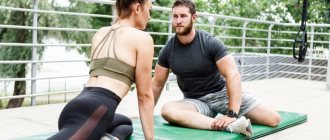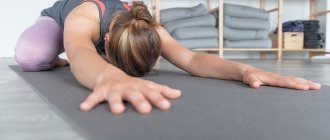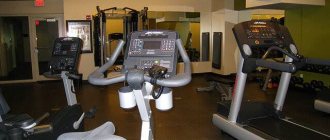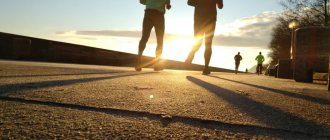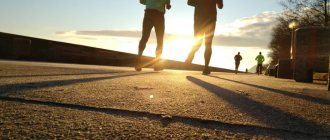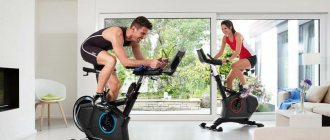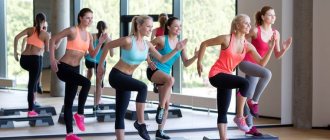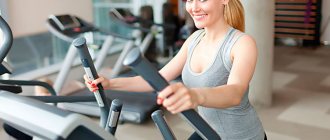Many professional bodybuilders and fellow athletes do cardio in the morning on an empty stomach in order to burn more fat. Zozhnik digs up scientific data on this issue.
Source: Zozhnik
The logic of this strategy is based on the fact that after waking up in the morning, our body has small reserves of glycogen, which was used as an energy source during sleep, so fasted cardio will burn more fat. And while this strategy may seem tempting at first glance, science doesn't support fasted cardio as a more effective way to lose fat than training after a meal.
To lose weight, you need to exercise in the morning and on an empty stomach
Alexander:
“You need to train when you are most comfortable and convenient. The fat burning process is not affected by the time of training. In order to lose weight, or rather burn excess fat, you need to maintain a calorie deficit. At what time you will burn these calories is a secondary question.
The downside of morning training (it doesn’t matter whether it’s cardio or strength training) on an empty stomach is high levels of cortisol in the blood, which is a catabolic hormone and is responsible for the destruction of muscle tissue. At the same time, it has a fairly large effect on the fat burning process. Here you need to choose what is more important - maintaining muscle or burning fat. Plus, you need to take into account that the body will always take its toll back. If you spent a lot of calories in the first half of the day, then, most likely, in the second half, the body will begin to be lazy and resist your activity. It turns out to be a kind of compensation. Judging by my experience, it is best to “burn off” the remaining energy 3-4 hours before bedtime, so that the body has time to calm down, return to normal, and fatigue does not interfere with your future plans.”
Fasted cardio as part of a training program
Doing cardio without breakfast is recommended in the following cases:
- upon reaching a “plateau” - a reduced rate of burning fat deposits against the backdrop of the body’s adaptation to changes in diet and exercise;
- after a complete restructuring and adaptation to a sports program that has already been used for a long time.
It is recommended to resort to “fasted” cardio on a temporary basis with certain breaks. Regular exercise will lead to the body adapting to this regime. The main thing to remember is that muscle loss is inevitable, and in some cases, depending on individual characteristics, lethargy and fatigue may occur.
Exercising in a thermal suit (film) helps you lose weight faster
Alexander:
“By wrapping yourself in film and using thermal suits, you only speed up the removal of fluid from the body. But just as quickly as it went away, it will just as quickly come back within the next day if proper nutrition is not followed. For example, with a passion for sodium, that is, salt in the diet. Or when taking simple carbohydrates, which cause insulin to be produced in large quantities.
All tricks with film, thermal suits, saunas, and so on have minimal impact on fat burning processes. At best, you won’t get results, at worst, you may develop heart problems.”
Fat begins to burn, and we lose weight only after 45 minutes on the treadmill
Alexander:
“Any cardio activity (running, cycling or jumping ropes) that increases your heart rate burns fat. BUT! The main thing here is the pace, that is, the rhythm of the heartbeat. You can calculate it using the formula: 220 minus your age = your maximum heart rate. And from this figure there are already certain zones: from 60% to 70% - aerobic (with it, fats, which are the priority source of energy, are best oxidized - and you lose weight); from 70% and above - anaerobic (here the source of energy is glycogen from the muscles, and if it is not in the muscles, for example, you are on a no-carbohydrate or low-carb diet, then the muscles themselves, not fats, will be used).
Fat is burned not only during cardio, but also after, during the day and even at night, when the body recovers from strength training. Fat oxidation will begin when blood sugar and insulin levels are low enough. In this case, it is best to do cardio immediately after strength training. And it is advisable that the cardio load be short-lived. This is all due to the same level of cortisol, which after strength training will already be too high, and with cardio, even at a low pace, there is a risk of burning muscle mass rather than fat.
Therefore, the ideal option would be: an hour of strength training + 30 minutes of cardio. If you still decide to do cardio training separately, then at a low pace (60% of the maximum heart rate) you can run, jump, pedal, walk for at least 1.5 hours without much risk of harming the body and muscles. For some, simply walking up a small hill on a treadmill will already accelerate the heart rate to the desired aerobic zone, where fat oxidation will occur, which will become your source of energy.”
Physiology of fat burning: how does fat go away?
To understand how body fat percentage and fasting cardio are related, let’s take a quick dive into the physiology of fat burning. Losing weight consists of three successive stages:
- Fat mobilization
- Transport
- Oxidation (combustion)
Fat mobilization
Fatty acid moves out of the cell into the bloodstream. This is under the control of hormones: there should be little insulin, and a lot of stress hormones (adrenaline and norepinephrine). Although, hormones such as somatotropin and cortisol also play a role, but a secondary one.
Transport Fatty acids move through the bloodstream to the place where they will be used as energy. This step is already difficult if people are dealing with fat in problem areas: the area around the abdomen in men and the thighs in women. Typically, blood flow in these areas is impaired and there are few transport routes.
Oxidation Fatty acids are burned in the muscles, liver and heart to produce energy.
Strength training won't make you lose weight
Alexander:
“We lose weight not during the strength training itself, but after it. Strength training helps maintain or increase muscle mass, which prevents our metabolism from slowing down in the first place. With enough muscle, our basal metabolism will always be higher. Even in an inactive state, we will burn more calories than a person of the same weight as us but with less muscle mass.
Let me remind you once again that we lose weight not from exercise itself, no matter whether it’s cardio or strength training, but from a calorie deficit. Strength training is necessary to maintain metabolism and good health.”
For those who have decided that it is worth
If you're a serious morning jogger, you'll want to know how to increase the intensity and effectiveness of your workouts.
Follow simple recommendations:
- Take your heart rate monitor with you.
- Increase your overall heart rate more systematically.
- Use interval loads.
- Warm up well.
- Before jogging, drink 500-600 ml 10-15 minutes before jogging. water. This will balance energy processes.
- Eat well after your morning cardio.
- Remember that after 20 minutes, morning cardio's effectiveness drops to the level of standard cardio.
- Sugar, sugar and more sugar. Eat a lot of carbohydrates at night if you are planning a marathon in the morning. This will reduce carbohydrate depletion, make your morning workout more energy efficient, and reduce the likelihood of amino acids being broken down into elements.
© ridofranz — depositphotos.com
In order for the belly to go away, you need to train and it is advisable to constantly wear a special corset
Alexander:
“The corset does not have any effect on fat burning processes. I recommend training in a belt for those who work with heavy weights. For girls, these are squats from 50 kilograms and leg presses from 150 kilograms.
If you wear a corset all the time, you can, of course, narrow your waist by compressing the lower rows of ribs. They are more mobile and can, with constant compression, take on a new position, thereby making the waist narrower. But this is only if you wear the corset constantly, taking a break only to sleep. But it’s not very comfortable or useful.”
Most Valuable Research
In 2014, one of the most valuable studies was published in the Journal of the International Society of Sports Nutrition (JISSN), which compared fasted and postprandial training. The scientists did not study the degree of influence of the two training strategies on the process of lipolysis or fat oxidation, but the resulting changes in body composition.
The purpose of the experiment was to study changes in fat and fat-free mass in exercisers either on an empty stomach or after a meal. Over the course of 1 month, 20 subjects completed 1 hour of moderate-intensity cardio training 3 times a week. In this case, the participants were divided into 2 groups:
o Group A trained in the morning on an empty stomach.
o Group B – after meals.
It's also important to note that both groups followed a researcher-controlled eating plan with the same 500-kcal energy deficit and macronutrient ratio. Research result:
The changes in body composition that were observed due to the combination of a hypocaloric diet with aerobic training were the same regardless of whether the subjects trained in a fasted state or after a meal.
What are the benefits of cardio training?
Many, struck by the sudden idea of losing weight, immediately rushed to the floor to work out their abs or do push-ups, but quickly returned to the sofa with slight dizziness. This is the result of vasoconstriction, and cardio training helps restore their elasticity and more.
The main benefits of cardio exercise:
- strengthening the heart muscle;
- normalization of blood pressure;
- increasing the body's endurance;
- strengthening immune defense;
- weight loss;
- prevention of diseases of the cardiovascular and respiratory systems.
You can start cardio training at 20, 30, 50, 60 years old, but at the same time be a healthy person, that is, without chronic diseases, especially of the heart and blood vessels. For vegetative-vascular dystonia and other symptomatic pathologies, you need to exercise under the supervision of a personal trainer who will select the optimal exercises for cardio training.
What should your post-workout breakfast be like when losing weight?
Let's move on to the fun part. Have you worked hard, have a beastly appetite, and now you’re afraid of losing your mind by getting a hundred or two extra calories? Then write down or memorize simple recipes for proper breakfasts:
- 150 g of boiled buckwheat or brown rice with a piece (100–150 g) of boiled or baked chicken breast and half a bell pepper.
- 150 g of durum wheat pasta with a piece (100 g) of boiled or baked fish.
- ½ cup of oatmeal, soaked in kefir or milk the night before, with chia seeds, berries or pieces of fresh fruit.
- An omelette of two eggs with vegetables, boiled potatoes (2-3 small tubers), a glass of natural fruit juice.
- Oatmeal cake. To prepare it you will need the following ingredients: 1 egg, 1 crushed banana, 2 tablespoons of oatmeal, 2 tablespoons of low-fat milk and 1 teaspoon of honey. Mix, place in a silicone mold and bake for 20 minutes at 180°C. Simple, tasty and low calorie!
Minuses
With all the positive effects of this method of losing weight, it also has its disadvantages:
- This method is not suitable for everyone. If you like to go to bed at dawn and get up by lunchtime, this exercise regimen will not suit you. You simply won't keep up;
- There are health restrictions. Not everyone can afford such training. Consulting a doctor will be the deciding verdict whether it is worth it or not;
- Early rise. For example, it was very difficult for me to force myself to wake up at this time in winter. Waking up turned into agony and haggling as I talked myself into getting up after 5 minutes. With the arrival of spring, everything became much simpler;
- Hunger. People who get up with a voracious appetite will definitely experience discomfort.
